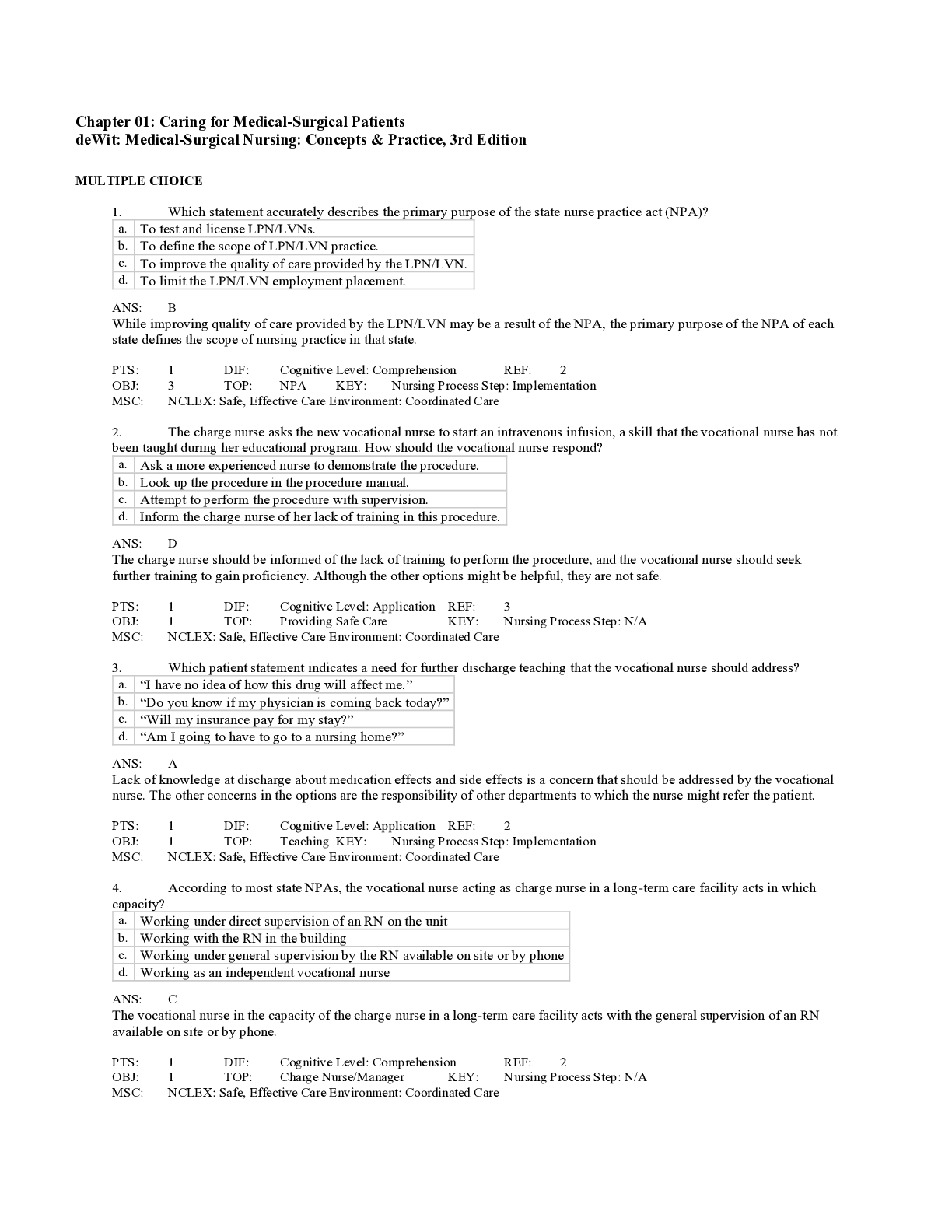*NURSING > TEST BANKS > HESI EXIT COMPREHENSIVE REVIEW EXAM B QUESTION AND ANSWERS EXPLAINED,100% CORRECT (All)
HESI EXIT COMPREHENSIVE REVIEW EXAM B QUESTION AND ANSWERS EXPLAINED,100% CORRECT
Document Content and Description Below
NURS 6550 MIDTERM EXAM QUESTIONS AND ANSWERS. Question 1 1 out of 1 points The AGACNP is caring for a patient who is quite ill and has developed, among other things, a large right sided pleural e... ffusion. Thoracentesis is sent for pleural fluid analysis. While evaluating the fluid analysis, the AGACNP knows that a fluid identified as a(n) __________ is the least worrisome type. Response Feedback: “A” is the correct answer. A transudate is essentially just water and can occur as a consequence of increased hydrostatic pressure in the pulmonary vessels. It typically implies that the some condition has produced an imbalance in colloid-hydrostatic pressures, such as CHF or hypoalbuminemia. While it can represent a serious problem, it may also represent a transient imbalance. Conversely, “B” is not correct as an exudate has more protein in it and implies a condition characterized by protein leaking from vessels, such as a malignancy or some serious systemic stressor. “C” is not correct—a chyliform effusion is characterized by fat and indicates a pathology causing massive triglyceride degradation. “D” is not correct as a hemorrhagic effusion is blood and typically means traumatic injury. Question 2 1 out of 1 points Differentiating vertigo from near-syncope and ataxia is one of the goals of history-taking when a patient presents as “dizzy.” The AGACP knows that vertigo is the problem when the patient reports the primary symptom as: Response Feedback: “A” is the correct answer. Dizzy is a layperson’s term and can mean many different things to patients and health care providers. When the patient identifies the primary symptom as a sense of spinning this supports vertigo, which is usually an inner ear problem. This versus ataxia which is neurologic or near-syncope which may be cardiac, neurological, or neurocardiogenic. “B” is not correct—this may occur with vertigo, but when it is the primary symptom it is most likely ataxia and neurological causes should be considered. “C” is not correct as coincident nausea is not specific and can occur with any of these complaints. “D” is not correct as it is also not specific; while ataxia cannot occur when supine near-syncope can. [Show More]
Last updated: 2 years ago
Preview 1 out of 43 pages

Buy this document to get the full access instantly
Instant Download Access after purchase
Buy NowInstant download
We Accept:

Also available in bundle (1)

All HESI EXIT RN, PN, Comprehensive study guide materials; Exams, test banks, GUARANTEED SUCCESS, UPDATED 2022.
All HESI EXIT RN, PN, Comprehensive study guide materials; Exams, test banks, GUARANTEED SUCCESS, UPDATED 2022.
By Victor 3 years ago
$25.5
7
Reviews( 0 )
$15.50
Can't find what you want? Try our AI powered Search
Document information
Connected school, study & course
About the document
Uploaded On
Jun 03, 2022
Number of pages
43
Written in
Additional information
This document has been written for:
Uploaded
Jun 03, 2022
Downloads
0
Views
131











